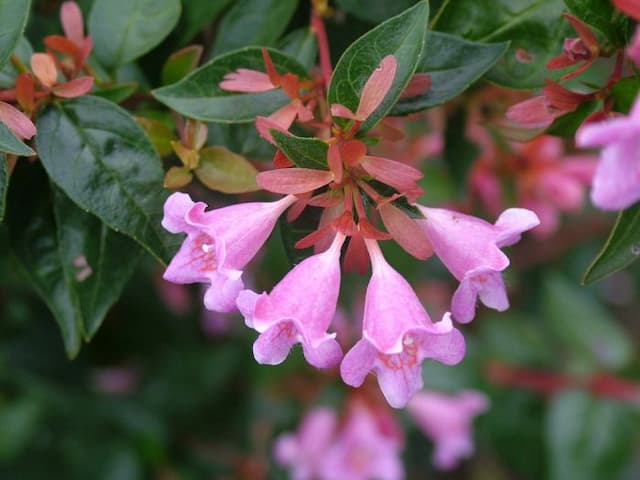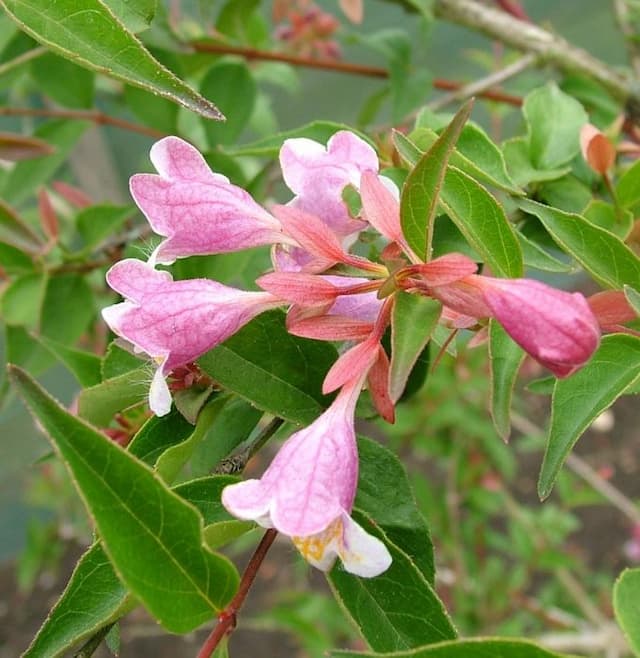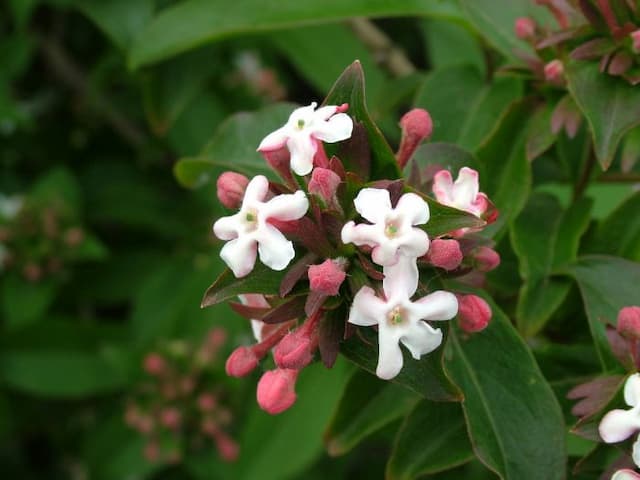Small teasel Dipsacus pilosus

ABOUT
Dipsacus pilosus, commonly known as small teasel, is characterized by its herbaceous nature and slightly spiny appearance. The leaves are arranged oppositely on the stem, meeting at the base to form a cup-like structure that can collect water. These leaves typically have hairy textures, which gives the plant its pilose (hairy) designation. The flowers of small teasel present themselves in oval or egg-shaped heads that bloom with tiny, white, sometimes pinkish flowers. These flower heads are often surrounded by spiny bracts, which can give the plant a somewhat prickly demeanor. The flowers are favored by pollinators like bees. After blooming, these flowers turn into small brown seeds that are spread by the wind and wildlife. The plant has a robust and erect stem, which enhances its upright growth habit, making it notable in the environments where it thrives. The overall appearance of small teasel is a blend of rough textures and delicate floral components, with a somewhat wild and untamed presence.
About this plant
 Names
NamesFamily
Caprifoliaceae
Synonyms
Small Teasel, Hairy Teasel
Common names
Cephalaria pilosa, Dipsacus sylvestris subsp. pilosus
 Toxicity
ToxicityTo humans
The plant Dipsacus pilosus, commonly known as small teasel, is not widely recognized for its toxicity to humans. There is limited information available on the poisonous nature of this plant when ingested by humans. If you suspect poisoning from any plant, including small teasel, it is crucial to seek medical attention immediately. Symptoms of plant poisoning can vary, but they often include nausea, vomiting, diarrhea, abdominal pain, and in severe cases, can lead to more serious consequences such as organ failure or death. However, specific symptoms relating to the ingestion of small teasel are not well documented, so caution is advised when handling or ingesting an unfamiliar plant.
To pets
The plant Dipsacus pilosus, commonly known as small teasel, does not have a well-documented history of toxicity to pets. While it is not commonly cited as a poisonous plant for animals, the general lack of data means that it should be considered with caution. Pet owners should prevent their pets from ingesting unknown plants, as they may still cause gastrointestinal upset or other health issues. If a pet ingests a plant presumed to be non-toxic but then exhibits symptoms such as vomiting, diarrhea, lethargy, or any unusual behavior, it is important to consult a veterinarian. They can provide guidance and, if needed, treatment to address any potential poisoning.
 Characteristics
CharacteristicsLife cycle
Biennials
Foliage type
Deciduous
Color of leaves
Green
Flower color
White
Height
3-4 feet (0.91-1.22 meters)
Spread
2-3 feet (0.61-0.91 meters)
Plant type
Herb
Hardiness zones
5
Native area
Europe
Benefits
 General Benefits
General Benefits- Wildlife Habitat: Dipsacus pilosus, commonly known as small teasel, offers habitat and food for various insects and birds.
- Ornamental Value: With its unique flower heads and tall structure, small teasel can add an architectural element to gardens and landscapes.
- Erosion Control: The root system of small teasel can help stabilize soil and prevent erosion on slopes and disturbed areas.
- Pollinator Support: The flowers of small teasel attract bees, butterflies, and other pollinators, supporting biodiversity.
- Low Maintenance: As a hardy plant, small teasel does not require much care once established, making it suitable for wildflower gardens.
- Education and Research: Small teasel can be used in botanical studies and educational projects to study plant life cycles and ecology.
- Cultural Significance: Small teasel has historical uses and significance in various cultures, often used in traditional crafts or as a symbol in art.
 Medical Properties
Medical Properties- This plant is not used for medical purposes.
 Air-purifying Qualities
Air-purifying QualitiesThis plant is not specifically known for air purifying qualities.
 Other Uses
Other Uses- Small Mammals Shelter: The dense growth of Dipsacus pilosus can provide shelter to small mammals in the wild.
- Insect Habitat: The structure of the plant, especially its flower heads, can provide a habitat for various beneficial insects, including bees and butterflies.
- Ornamental Use: Dipsacus pilosus can be used in ornamental gardens due to its distinctive inflorescences and architectural form.
- Soil Erosion Control: The root system helps stabilize the soil and prevent erosion on slopes and banks.
- Educational Tool: It can be used in educational settings to teach about plant life cycles and pollination due to its unique flowering process.
- Floral Arrangements: The dried flower heads can be used in floral arrangements as they maintain their shape and add texture.
- Craft Material: The dried stalks and heads can be incorporated into craft projects, such as homemade paper making or as decoration in wreaths.
- Fabric Dye: Historically, parts of the Dipsacus pilosus may have been used to produce a greenish dye for fabric, although this is less common today.
- Photography Subject: Its unique appearance makes it an interesting subject for nature photographers, especially when capturing the details of the flower heads.
- Garden Wildlife Enhancement: Including Dipsacus pilosus in a garden can attract a variety of wildlife, which contributes to local biodiversity.
Interesting Facts
 Feng Shui
Feng ShuiThe plant Small Teasel is not used in Feng Shui practice.
 Zodiac Sign Compitability
Zodiac Sign CompitabilityThe plant Small Teasel is not used in astrology practice.
 Plant Symbolism
Plant Symbolism- Protection: Dipsacus pilosus, commonly known as small teasel, has sharp points, which traditionally symbolize defense and protection from harm.
- Healing: Historically, teasels, including small teasel, have been associated with medicinal properties, leading to its symbolism for health and healing.
- Cleansing: The small teasel has been used in the past for carding wool, which is a cleaning process, thus it symbolizes cleansing and purity.
 Water
WaterSmall teasel should be watered thoroughly, ensuring the water reaches deep into the soil to encourage deep root growth. It is typically best to water the plant when the top inch of soil feels dry to the touch, which might be once or twice a week, depending on the climate and weather conditions. During the growing season, ensure you provide about one gallon of water to the plant per week, adjusting for rainfall and temperature changes. Overwatering can be detrimental, so it's essential to avoid waterlogged soil. During winter, reduce the watering frequency as the plant's water requirements will decrease.
 Light
LightSmall teasel thrives in full sun to partial shade conditions. The ideal spot for this plant would be a location where it can receive at least six hours of direct sunlight per day. It can tolerate some light shade, especially in areas with intense afternoon sun, but too much shade may inhibit its growth and flowering ability.
 Temperature
TemperatureSmall teasel is tolerant of a range of temperatures, but it grows best in temperatures between 60°F and 75°F. This plant can survive temperatures as low as 20°F in the winter months and can handle summer heat up to 90°F. Avoid placing it in locations where temperatures may drop below 20°F for extended periods to prevent cold damage.
 Pruning
PruningPruning small teasel helps maintain its shape and can encourage more vigorous growth. Prune in late winter or early spring before new growth starts to remove any dead or damaged foliage and shape the plant. Pruning is not frequently required; doing it annually or once every couple of years is typically sufficient. The best time to prune is when the plant is dormant.
 Cleaning
CleaningNot needed
 Soil
SoilThe Small Teasel (Dipsacus pilosus) thrives in well-draining loamy soil with a pH range of 6.0 to 7.5. A soil mix composed of garden soil, compost, and a bit of sand or perlite will encourage healthy growth. Ensure the soil is rich in organic matter to support this plant's needs.
 Repotting
RepottingSmall Teasel (Dipsacus pilosus) doesn't require frequent repotting and can be done every 2-3 years, or when it has outgrown its current pot. Repotting in spring allows the plant to acclimate during its active growing season.
 Humidity & Misting
Humidity & MistingSmall Teasel (Dipsacus pilosus) prefers moderate humidity levels, around 40-60%, which are typical of its natural woodland and grassland habitats. Avoid environments that are too dry, as this may hinder its growth.
 Suitable locations
Suitable locationsIndoor
Place Small Teasel in bright, indirect light with moist soil.
Outdoor
Plant Small Teasel in partial shade and moist, well-drained soil.
Hardiness zone
4-8 USDA
 Life cycle
Life cycleDipsacus pilosus, commonly known as small teasel, begins its life cycle as a seed, typically germinating in the spring when conditions of light and temperature become suitable. Upon germination, it develops a rosette of leaves close to the ground, where it may remain for one season before shooting up a flowering stalk in its second season, as it is a biennial plant. During its second year, the small teasel produces tall stems topped with oval flower heads that bloom into small, white or pale pink flowers, attracting pollinators and resulting in seed production. After flowering, seeds are dispersed by wind, water, or animals, completing the reproductive cycle. The parent plant usually dies after seed dispersal, having accomplished its biennial life span. The cycle continues as new seeds find suitable ground to germinate and grow the following season.
 Propogation
PropogationPropogation time
Spring-summer
The small teasel (Dipsacus pilosus) is generally propagated through seed. The best time to sow the seeds is in the spring after the danger of frost has passed, or they can be sown in autumn so they undergo natural stratification during the winter. To propagate by seed, one should first scatter the seeds over a well-draining seed starting mix and lightly cover them with soil. Keep the soil moist but not waterlogged, and place the container in a warm location with indirect light. Germination can take several weeks, and once seedlings emerge and grow sturdy enough, they can be transplanted to their final location in the garden. This method is advantageous as it allows for the growth of many plants at relatively low cost and effort.







![Himalayan honeysuckle [Golden Lanterns]](/_next/image?url=https%3A%2F%2Fplants-admin.emdemapps.com%2Fimages%2Fplants%2F%2Fimages%2F604b55302cc87.png&w=640&q=75)

